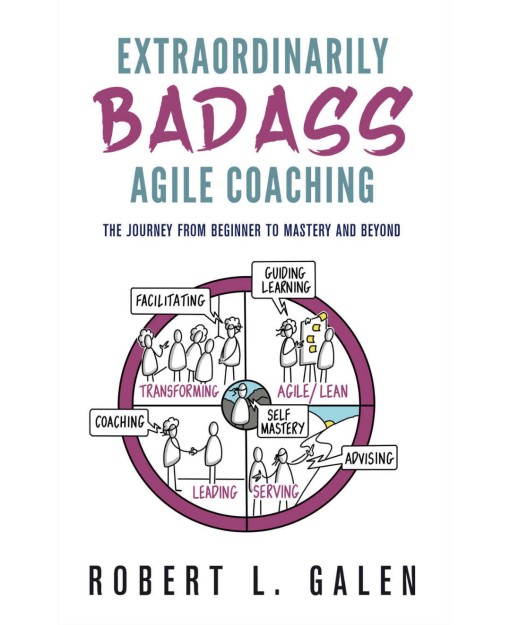
Chapter 13 of Badass Agile Coaching: The Journey from Beginner to Mastery and Beyond is titled Badass Pair-Coaching. Over the years I have had many opportunities to participate in pair coaching, although fewer over the past few years. I miss pair coaching; it pushes me to expand my horizons and up my game. When I began reading this chapter I expected it to be only esoterically interesting, but then I got to pair coach with Jonathan Lee for a few hours — hopefully, we will do it more often. Pair coaching, like pair programming, offers numerous benefits ranging from a second set of eyes to greater diversity of ideas and experience. My unscientific assessment is that pairing in agile transformations reduces costs and increases the likelihood of ideas sticking with teams and organizations.
The word pair envisions two people working together hand in glove, much like a driver-navigator approach to pair programming. Pair-coaching requires a broader variety of topologies. Coaches will sometimes work together as a pair and other times as aligned individuals that periodically sync. Making a pairing approach work requires agreement on several points:
- Alignment on mission and goals – Working toward the same set of goals establishes an immediate set of guardrails to keep work moving in the same direction.
- Shared Context – Both coaches need to understand as much of the context for the engagement as possible.
- Preparation – The coaches need to plan the engagement and the day to deliver the most value and not step on each other’s toes.
- Single Voice – One person can’t push one set of ideas or framework while the other is going in a different direction. This is more of an alignment on the tactical approach to the mission and goals.
- Client Agreement – The biggest reason why the number of pairing (or any combination of multiple coaches) opportunities has gone down is a view that the approach is more costly. Many single coach agile engagements fall prey to the same “too many people working on too many things at once” issue as development teams. This boils down to a trust problem in which everyone believes that one party is trying to underpay and the other party is trying to maximize revenue.
The chapter includes a canvas (the cool word for template) for building a working agreement for pair coaching. I will try it the next time I pair-coach.
One of the points that the chapter drove home to me was the need to sync and retrospect as a pair. Jonathan and I spent a bit of time retrospecting and syncing after our session sitting in the front seat of his car as it warmed up in the 3-degree F weather of northern Illinois. I was slightly uncomfortable until the heat kicked in but the event was focused and important. Retrospection allowed us to hone our approach and syncing ensured we stayed aligned.
It is fun when the topic of the week aligns with the events of the week. I am not assuming any type of causal relationship. I guess we will see during our re-read of Chapter 14, titled Badass Role-Based Coaching next week. (Have you bought a copy? Badass Agile Coaching: The Journey from Beginner to Mastery and Beyond)
Note: With the completion of Chapter 13 we have 8 or 9 weeks left before we begin Team Topologies.
Source link
